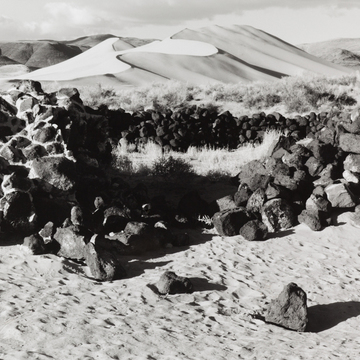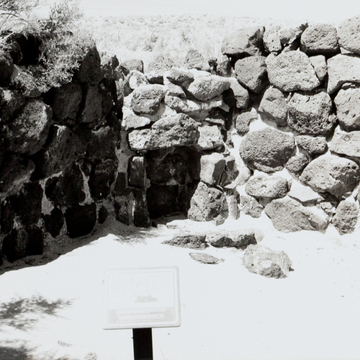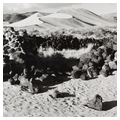In ruins, the low walls of undressed rhyolitic stones mark the site of one of the numerous Pony Express stations that dotted Nevada in the mid-nineteenth century. The six-room station is roughly rectangular, with the long axis oriented east-west, measuring approximately 102 by 56 feet. The rocks for the walls were found locally and laid up dry. A stone corral stands at the east end of the ruins. The British writer and explorer Sir Richard Burton described the station in 1860, noting that the structure had no roof, but archaeological evidence suggests the existence of a roof made of thatched willow, used because of the scarcity of lumber. The building functioned as a Pony Express station from 1860 until the express service ended in 1861. The station then became a stop along the overland mail route from 1861 to 1863 and also a telegraph station, which closed in 1869.
Desert sands quickly buried the station, which was unearthed by archaeologists in 1976. Today the Bureau of Land Management maintains the old station and has posted interpretive signs around it. Approximately thirty-five miles to the east along U.S. 50, the stone ruins of the Cold Springs stage and telegraph stations are visible from the highway. The Cold Springs Pony Express station ruins are located about one and one-half miles east of these ruins.




